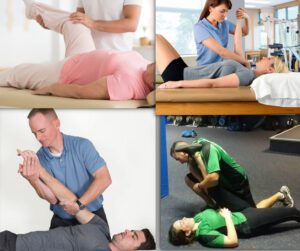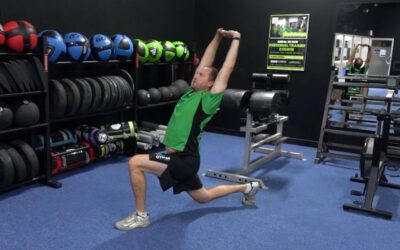With a wide range of functional training techniques now used in our group fitness and personal training sessions, you may have heard the term “PNF” being used… but have you ever wondered about the science behind this technique and why it is so effective?

In the hands of a trained and qualified exercise and health professional, Proprioceptive, Neuromuscular Facilitation (PNF) is an extremely effective tool for increasing flexibility, strength, and mobility as well as improving soft tissue injury rehabilitation.
But it is possible to implement this highly effective, flexibility improving, strengthening, and mobility enhancing training technique, anywhere, anytime, and without any additional equipment…..
So… what exactly is Proprioceptive Neuromuscular Facilitation (PNF)?
Also known as “contract and relax” stretching, PNF stretching involves a static stretch, followed by a strong isometric muscle contraction (i.e. creating tension without the muscle changing length), which is then followed by another static stretch.
Of all the types of flexibility training, PNF has proven to produce the best results for those looking to increase flexibility and mobility.
The science behind PNF can be complex, so to put it as simply as possible…. during an isometric contraction, a reflex is initiated by the tension in the muscle, which causes the Golgi tendon organs located in the tendons to fire off a message to the spinal cord, allowing the muscle to relax. This then allows the muscle to be stretched further statically.
This is known as the “inverse stretch reflex” and is best described as a protective mechanism that tries to minimise the impact (or stop) excessive loads that may cause injury.
Let’s look at other methods of stretching and flexibility training:

Static Flexibility:
What is it? This is the gradual stretching of a muscle to a point of tension, where it is held without bouncing. To maintain flexibility, the stretch should be held for 15 – 30 seconds or 30 – 60 seconds to improve flexibility.
When to use: This is an effective and safe method for stretching muscles and connective tissue at the end of a training session and during a flexibility session.
Dynamic flexibility:
- What is it? Dynamic flexibility movements use muscle activation to take a limb through its normal, full range of joint motion.
- When to use: You often see this used in functional training and sport-specific movements, particularly during the warm-up phase.
Ballistic flexibility:
- What is it? Also called “bounce” stretching, Ballistic stretching is performed by taking the muscle to the end of its normal range of motion and beyond.
- When to use: This type of flexibility training is activity-specific. If done incorrectly it can result in injury, so it is recommended this kind of training is only ever be performed under the supervision of qualified exercise and sporting professionals….
So… how do we get started with PNF?
Key principles for all stretching types are:
- Warm-up for 5 to 10 minutes before conducting any stretching
- Stretch gently and slowly
- Stretch to the point of tension but never pain
- Breathe steadily throughout
Getting started with PNF to improve general flexibility:
- For guidance and more information, ask your Health Professional, Personal Trainer or Instructor
- Leave injury rehabilitation and smaller muscle groups, neck and spine mobility to the professionals
- Start with big muscle groups (hamstrings, quadriceps, calves, chest, upper back and inner thighs)
- The effort in the contraction should be relevant to a person’s level of conditioning.
- PNF training should never be aggressive, forceful or painful
- If working with a partner – you must direct them with positioning and amount of hold to apply
Steps to performing PNF stretching:
- Find a person to help or something immovable to assist (e.g. hands, arm, wall, towel or strap)
- Position muscle to be stretched under gentle tension
- Apply sufficient resistance to prevent movement
- Press against the hold, without moving the limb (an isometric hold)
- Hold this tension for 5 – 6 seconds
- Relax the contracted muscle group
- Move into a controlled static stretch for about 20 to 30 seconds.
- Allow 30 seconds to recover
- Repeat the process 2 – 4 times
- Perform every 2 – 3 days
More flexibility and mobility tips can be found HERE





